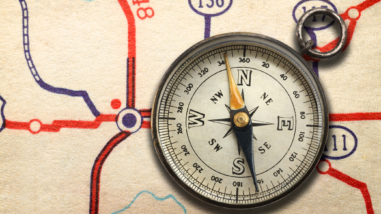This post was originally published at Transparency Talk, the Glasspockets blog. Sara will join Pamela H. David of the Walter and Elise Haas Fund and Peter V. Long of the Blue Shield of California Foundation in a panel moderated by Brad Smith of the Foundation Center to discuss the “Get on the Map” project May 13 in San Francisco. -ed.
Why don’t Foundations collaborate more? Why isn’t philanthropy more “we’re all in this together” and less “we’ll do it our own way”? I’ve heard these questions and discussed possible answers many times during my years working in our sector. The literature pointing to the need for, and positive results arising from, effective collaboration is abundant. Yet too often, funder collaboration still remains a hope rather than a reality, and we default to going it alone. Things are beginning to shift, however, and I’m optimistic that a “collaboration-first” mindset can take hold. Over time, we’ve seen collaboration, sharing, and transparency increase in philanthropic practice. One thing fueling this shift, among many other factors, is the way technology makes sharing and interconnection more attainable, and helps swiftly cut through barriers to collaboration.
Technology’s capacity to enable collaboration makes me excited about the nationwide campaign for philanthropic organizations to “Get on the Map” and participate in collective data sharing and visualization about our grantmaking. Once we’ve all shared our grant data through the Foundation Center’s eReporting Program and it pushes the data to the Foundation Maps tool, not only will we be able to see the flow of philanthropic dollars within the state’s social sector, we’ll also be able to put that information to work. With this new tool, we’ll finally be able to answer within a reasonable time frame some key questions that have thus far eluded us: who else funds a specific organization, what other organizations are doing, where gaps exist, and how our work fits within the full philanthropic context for our regions. This technology will give each of us the ability to see our work in a broader context, explore giving trends over time, reveal connections, see gaps, and discover new partners. It will make collaboration and impact more possible and more visible—things we all want.
As the Director of Grants Management at the William and Flora Hewlett Foundation, I’ve experienced first-hand the power that high-quality, timely data can bring to improve decision-making, monitoring, and overall grant practice. We frequently use and discuss data internally about our own grant practice—a good example is the project our President, Larry Kramer, described in his Annual Letter last year. Because data can inform and create change, sharing and availability of relevant data is a key strategic goal for many of our programs. The Hewlett Foundation was an inaugural participant in the Reporting Commitment, managed by the Foundation Center, and we participate in the International Aid Transparency Initiative by sharing our data. We do these things because we know that data can fuel insight and support greater impact, not only for Hewlett but for all of us. Sharing our grantmaking data as part of the “Get on the Map” campaign is just the logical next step in acting on this knowledge.
The “Get on the Map” campaign is itself an example of effective collaboration in action. The campaign is a joint effort led by the regional associations across the country in partnership with the Foundation Center and the Forum for Regional Association of Grantmakers. As a member of the committee working on the California-wide effort through our regional associations – Northern California Grantmakers, Southern California Grantmakers and San Diego Grantmakers and supported by the James Irvine Foundation- I’ve already experienced effective collaboration across the state of California. As a supporter of the campaign it’s been heartening to see, and support, a true spirit of excitement, encouragement, and optimism for this project across the state. It’s a great example of how building in infrastructure together makes better grantmaking and more sharing possible. The campaign tagline, “Doing Good, Done Better,” rings true for me, and I encourage all of us in our various regions to participate and “Get on the Map.” We can do better together.



